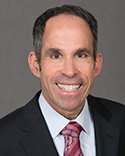(This is the fifth in a series on the impacts of the coronavirus on employment and the workplace. Read part one, part two, part three and part four.)
On Friday, President Trump announced a task force on reopening the national economy. Also on Friday, several Governors, including California Governor Newsom, announced they were developing plans on state reopening processes and strategies.
Good. Though the dates for reopening our economy will depend on the COVID 19 case data we’ll be getting over the next few weeks, now is the time to plan for reopening. COVID 19 has no economic precedent. But we are not without guidance. We can draw on the ways that essential businesses that have continued operations over the past six weeks have adapted and innovated. Though little noted in the media, within a short time, businesses have moved rapidly to develop new protocols and even forms of collaboration to meet the changed COVID 19 environment.
To help us understand the adaptions and lessons going forward, let us bring in Paul P. Josephson, a partner at Duane Morris LLP, and former Chief Counsel to the Governor of New Jersey. Josephson has been advising businesses, as they take aggressive measures for safety of workers and customers, while continuing operations.
New Business Protocols To Promote Worker Safety: The top priority for businesses across all sectors, according to Josephson, is to adapt with safety protocols. Josephson was involved in business reopening efforts in 2001, following the September 11 attacks. “Even after the New York area governments gave the green light to reopening business operations, it took some time for workers to become comfortable returning to high rise office buildings and other workplaces in the World Trade Center area.” The key, according to Josephson, was restoring public confidence that the area was safe, and high density buildings were adequately protected—which was done through a series of new security and environmental protocols.
Similarly, when leaders officially re-open economic activity, workers and customers are unlikely to have the confidence to come back unless they see actions for COVID 19 protection. Josephson notes that many essential businesses in operation already have put into place a range of new safety protocols, among which have been:
- Testing, including temperature testing.
- Masks and social distancing.
- Sending symptomatic employees home and instituting return to work clearances.
- Workplace disinfecting strategies.
[...]
Voluntary Business Collaborations to Ensure Worker and Customer Safety: Beyond the safety measures, Josephson notes that businesses within sectors are forming new voluntary collaborations to ensure worker and customer safety. He points to the cannabis industry as one example. “Competing cannabis dispensaries, which have been deemed essential businesses in most states, are beginning to collaborate to reduce the customer lines in any dispensary. By increasing wholesaling of products to their competitors, they are reducing travel times and exposure for patients. [...]
Utilizing Big Data to Track Infections and Respond Rapidly: Josephson notes that mobile communication technology is already changing the game. “The countries that have been most successful so far in bouncing back are those, like Singapore and Taiwan, that are compact enough to allow for rapid contact tracing to prevent a flare up. China has implemented a phone app that allows officials to trace where a COVID 19 patient has been the last 14 days. Google and Apple have announced they are working on similar technology.” [...]
Reopening, Pivoting and Longer-Term Strategies: OSHA issued Guidance on Preparing Workplaces for COVID-19 in March. Josephson advises that any business should consider those voluntary measures mandatory reading. “And of course, that guidance won’t be the last word. As scientists learn more about COVID-19, how it is transmitted, how we can more readily detect its presence, and especially how we can neutralize the virus, that guidance will change. Businesses need to be nimble and stay on top of the latest research and recommendations.” [...]
To read the full text of this article, please visit the Forbes website.









